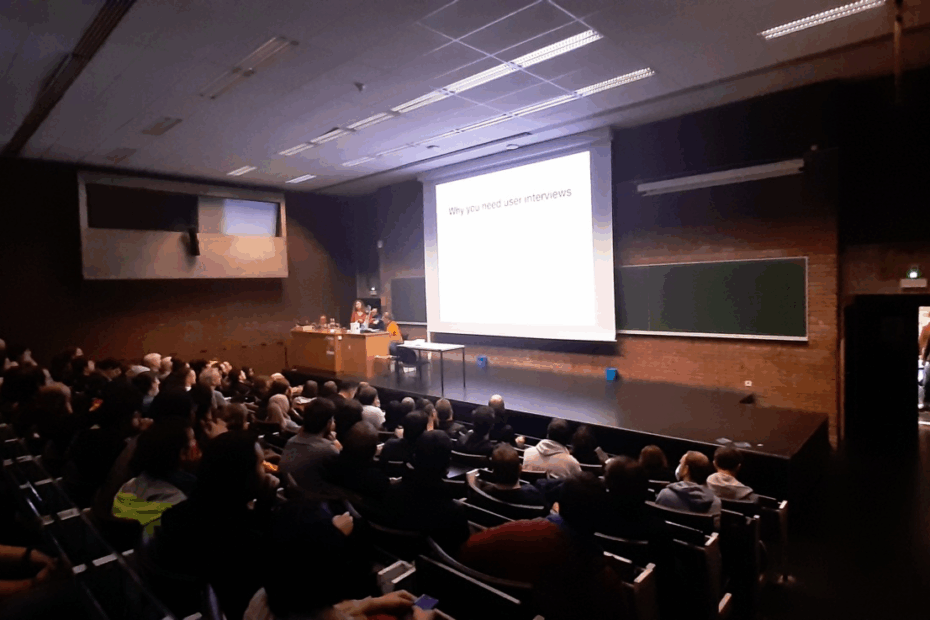It’s showtime. Big smile on, wait for the applause to die down and remember—speak slowly.” Beth closes her eyes briefly, puts on the smile, and walks up the three steps to the stage.
“Please welcome to the stage, Beth Walters.”
The generous applause continues from an eager-looking audience.
She had wandered around the conference for the last day or so, marveling at the energy. Last night, she had paced around her hotel room. She had edited her slides. Found some new images. Her laptop was already on stage, plugged in and ready to go. She was as prepared as she could be. She looks down at the front row. There are quite a few Gerbach faces she recognizes, but mainly strangers. Mainly encouraging faces. A few blank ones. A few are looking at their phones.
“Hi, good afternoon.” Her voice sounds weak and thin. She adjusts her microphone closer to her mouth. “My name is Beth Walters. Thanks so much for joining me today and thank you to Erin and Damien for inviting me to speak to you.” She takes a deep breath. “Slow. Slow down,” she thinks. “SMILE.” “Okay, before we get started, a quick show of hands. Who believes that they are doing logging and monitoring correctly?”
It goes well.
She spent three weeks writing, tweaking, dry running, and modifying the presentation, and she got it down pretty slick. It doesn’t preach, and it doesn’t drag too much. The twenty-five minutes fly by, but there is always a question of the message. Did it land?
The best talks she’d seen were unforgettable because they directly applied to the next day at work. So much of what you see at conferences is inapplicable. In some ways, when speaking about tech, the more technical talks were the most useful.
Charles had explained it to her in no uncertain terms, as only a true architect could.
“And then there is the notion of giving the audience something they can use and giving them something to think about. Yes, we can promote a certain technological path, but the critical thinking required to apply it should be the same as the one we acquire to learn it.”
She looks blankly at him, so he continues.
“Here’s an example. When you pick up a framework of any kind for the first time, it’s for a reason. We have a problem to solve, perhaps we want to learn something, perhaps a vendor has provided a new way of doing something? For example, I want to authenticate my pipelines without using secrets. So I notice that I can use OpenID Connect—OIDC.”
“I am excited to implement OIDC because it allows me to do away with passwords in my pipeline. But instead, I must have another way to authorize which, while it removes the need for me to handle and rotate keys, has added more steps and complexity to my pipeline or my authentication protocol.”
“Is the technical debt that we assume with this authorization change something which we, as humans, want to take on our shoulders? Should we decide to take on a technology, and if so, what history does this create for us?”
Beth has to admit it’s a neat point.
He continues.
“We are building history with software architecture. Every decision we make as individuals or as a unit, a team or an organization, means we are making work for our future selves or others. The decisions are almost ad-hoc and the output is abstract, but the reality is that it will cause us work.”
